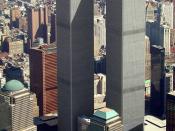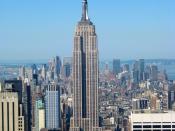If you haven't noticed, the race to for the highest skyscraper has begun. It may be subtle, but towers that are over 500m are shooting out of everywhere, each trying to outdo each other, each boasting about its engineering feat, each saying their tower is better. The construction of Burj Dubai that will eventually rise close to a kilometer and master plans of others supertalls is marking a turning point to the nature of skyscrapers we are going up instead of across. However, a question rose form a recent observation I made towards skyscrapers, that is, most of super high skyscrapers would be left half empty for a long time. For example, Taipei 101, the highest building in the world, which when looking up on, rows of blank floors and ghostly space can be seen, waiting longingly for some nourishment. So the question is; why build such high skyscrapers when it is unpractical or necessary.
But firstly, we have to look at the origin of skyscrapers and its history. The word "skyscrapers" originated from the nautical term for a tall mast of a sailing ship. Since then, people took the term and use it on buildings that were very tall. However not all buildings are known to be the so called "skyscrapers" but, as defined by Emporis, (skyscrapers) should have the height of approximately at least 150 meters and must be a continuous habitable building, (as oppose to masts and towers (like the CN tower in Toronto). Its main purpose was to multiply floor space for people to live/work in where there is a lack of space.
So, the first known or classified as a "skyscraper" were found in Chicago in 1885 and since then many more have risen there, and thus the naming of Chicago as the birth place...


